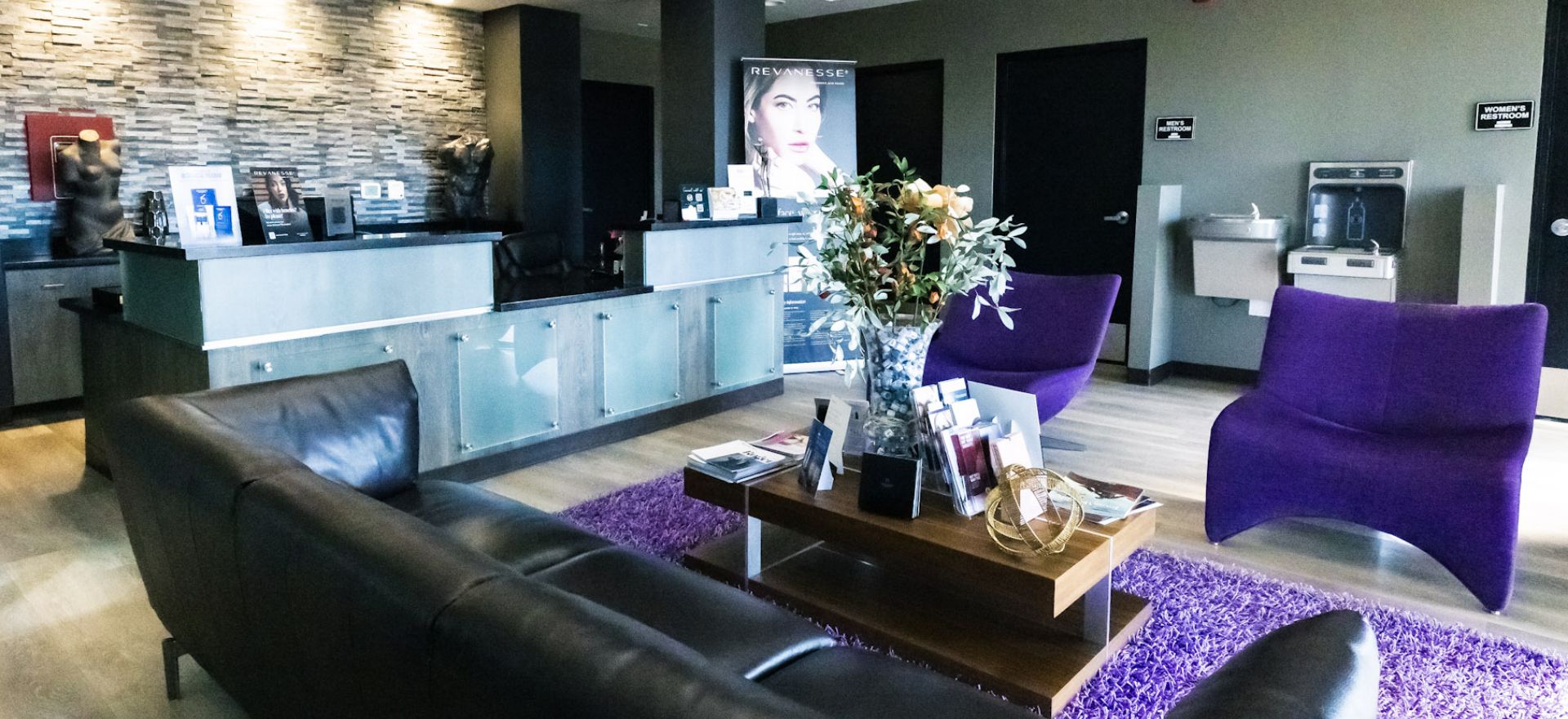March 27, 2024 | 9 minute read
 If you have recently undergone labiaplasty, you may be eager to return to your regular fitness routine. However, it’s important to approach post-operative exercise with caution to ensure a smooth recovery process. In this guide, we will discuss the best practices for returning to fitness after labiaplasty, including understanding your body’s healing process, following your surgeon’s advice, identifying the right time to resume exercise, recommended exercises to start with, exercises to avoid during the initial recovery phase, and listening to your body and adjusting accordingly. Board-certified plastic surgeon Dr. Marcos Gonazlez provides labiaplasty to patients in El Paso, TX and surrounding areas.
If you have recently undergone labiaplasty, you may be eager to return to your regular fitness routine. However, it’s important to approach post-operative exercise with caution to ensure a smooth recovery process. In this guide, we will discuss the best practices for returning to fitness after labiaplasty, including understanding your body’s healing process, following your surgeon’s advice, identifying the right time to resume exercise, recommended exercises to start with, exercises to avoid during the initial recovery phase, and listening to your body and adjusting accordingly. Board-certified plastic surgeon Dr. Marcos Gonazlez provides labiaplasty to patients in El Paso, TX and surrounding areas.
Understanding Your Body’s Healing Process
Recovering from labiaplasty, a body undergoes a series of natural healing stages that vary significantly from one person to another. It’s paramount to recognize that the journey to full recovery is highly individualized, with each body responding to the procedure in its unique way. Initially, it’s common to experience symptoms such as swelling, bruising, and a level of discomfort—these are your body’s natural responses to the surgical intervention it has just undergone. This phase of healing is critical; it’s a period where the body meticulously works to repair itself. During this time, activities and movements that could potentially disrupt this natural process should be approached with caution or avoided altogether.
It’s also important to be mindful of the body’s signals. For instance, an increase in discomfort or swelling can be indicators that the body requires more time to heal or that certain activities are too strenuous for the current stage of recovery. The healing process is not linear and can experience fluctuations based on a variety of factors, including physical activity levels and overall health. Therefore, allowing for flexibility in your recovery timeline is essential, acknowledging that some days may feel like a step forward, while others might necessitate a pause or a step back to accommodate your body’s needs. Patience and a gentle approach to reintroducing physical activity are key components in supporting your body through its healing journey after labiaplasty.
The Importance of Following Your Surgeon’s Advice
Adhering strictly to the guidelines provided by your surgeon post-labiaplasty is a cornerstone of a successful recovery. These tailored instructions, which encompass activities to avoid, signs to watch for, and hygiene practices to follow, are designed based on the specifics of your procedure and your body’s unique healing capacities. This personalized advice is your roadmap to navigating the post-operative period with as little risk of complications as possible. Surgeons draw from a vast reservoir of experience and medical knowledge to draft these care directives, ensuring they cater to the intricate needs of your recovery. Ignoring or deviating from these instructions can inadvertently extend the healing process or, worse, precipitate unwanted outcomes such as infections or the disturbance of the surgical results. Importantly, the guidance you receive will likely address the gradual reintroduction of physical activities, outlining a safe timeline and the types of exercise that are deemed appropriate at each stage. This is not merely about avoiding certain strenuous activities; it’s also about recognizing when and how to carefully integrate movement back into your life to aid your recovery rather than hinder it. Trusting your surgeon’s expertise and following the provided advice closely can significantly enhance the efficiency and comfort of your recovery journey, ensuring that you return to your fitness regimen with the best possible outcome.
Identifying the Right Time to Resume Exercise
Determining the appropriate moment to reintegrate physical activity into your routine after undergoing labiaplasty is crucial for a healthy recovery. The general guideline suggests a hiatus of about 4 to 6 weeks before embarking on strenuous exercises, but this timeframe can vary significantly based on individual healing rates and the complexity of the procedure performed. It’s paramount to have a follow-up consultation with your surgeon to assess your healing progress and get personalized advice on when it’s safe to resume exercise. This conversation is an opportunity to discuss any concerns and receive specific recommendations tailored to your recovery status.
It’s worth noting that the initial return to exercise doesn’t mean jumping back into your pre-surgery workout intensity. It involves a careful, gradual reintroduction of physical activity, closely monitoring for any signs of discomfort or unusual symptoms that could indicate a need to slow down or readjust your approach. Resuming exercise is not merely about reaching a certain post-operative week; it’s deeply intertwined with your body’s unique healing journey and how you’re feeling physically and emotionally.
Engaging in this dialogue with your surgeon and paying close attention to your body’s feedback are instrumental in marking the right time to reintegrate exercise post-labiaplasty. By adopting a patient, cautious approach, you can help ensure that your return to fitness supports your recovery and contributes positively to your overall well-being.
Recommended Exercises to Start With
Embarking on your fitness journey after a labiaplasty requires a gentle and mindful approach to physical activity. Initially, embracing low-impact exercises is paramount to fostering a supportive environment for your body’s healing process. Starting with walking provides a solid foundation, allowing you to gauge your body’s response to activity while promoting circulation and aiding in the reduction of swelling. Integrating swimming into your regimen offers the benefits of resistance training with minimal stress on the surgical site, due to the buoyancy of water. Additionally, yoga emerges as an invaluable practice during this time, with its focus on flexibility, strength, and mental well-being. It’s essential to select yoga poses that feel comfortable and do not exert pressure on the affected area, ensuring a harmonious balance between physical activity and healing. Pilates, with its emphasis on core strength and alignment, can also be introduced gradually, focusing on low-impact movements that enhance recovery rather than impede it. As your recovery progresses, these exercises can serve as a stepping stone to more intensive workouts, always aligning with the guidance of your healthcare provider. It’s crucial to remember that the transition to incorporating higher-intensity exercises should be incremental, closely monitored for any signs of discomfort that warrant a reassessment of your approach. By prioritizing these low-impact exercises, you lay the groundwork for a resilient return to your pre-surgery fitness levels, ensuring that each step forward in your exercise regimen is in harmony with your body’s healing journey.
Exercises to Avoid During the Initial Recovery Phase
In the delicate period following a labiaplasty, giving your body the chance to heal without unnecessary stress is paramount. Certain exercises can inadvertently place too much pressure on the healing tissues or exacerbate swelling and discomfort, thus hindering your recovery. Specifically, high-impact activities such as running, aerobics, and any form of jumping should be postponed. These exercises can cause significant jarring to the body, which is not conducive to the delicate state of your post-surgical recovery.
Additionally, exercises that involve direct pressure or friction in the surgical area are to be strictly avoided. This includes cycling or spinning, which can irritate the sensitive tissues and potentially disrupt the healing process. Similarly, activities that involve wide leg stances or stretching, such as certain yoga poses or deep squats, could stretch the surgical site and should be avoided until your surgeon advises it’s safe to resume them.
Strength training, especially when involving heavy weights, should also be approached with caution. Engaging in intense abdominal workouts or movements that increase intra-abdominal pressure can indirectly affect the surgical area and should be reintroduced to your fitness regime only under professional guidance.
The focus during this initial phase should be on protecting the integrity of the surgical results and supporting your body’s natural healing process. Adhering to these guidelines will not only aid in a smoother recovery but also ensure the longevity of your labiaplasty outcomes. It’s important to maintain open communication with your healthcare provider, who can give the green light when it’s appropriate to gradually reintroduce more varied and intensive exercises into your routine.
Listening to Your Body and Adjusting Accordingly
As you gradually reintegrate physical activity post-labiaplasty, staying attuned to your body’s signals is essential for a healthful recovery. Experiencing discomfort, pain, or an uptick in swelling while exercising serves as a clear indicator that your body is signaling for a pause. It’s paramount to heed these signs promptly by halting the activity and giving your body the rest it requires. Ignoring these warnings can inadvertently extend the recovery period or, in some cases, exacerbate issues, leading to potential setbacks in your healing journey.
In this phase of recovery, adopting a flexible approach to your fitness regimen is beneficial. If certain activities lead to discomfort, consider them as cues to modify your workout plan or explore alternative, lower-impact exercises that your body tolerates better. This adaptability not only aids in safeguarding your well-being but also contributes to a more positive and gradual return to your pre-operative fitness levels.
Consultation with your healthcare provider following any adverse reactions during exercise is advisable. Their expertise can offer insights into whether these responses are part of the normal healing process or if adjustments to your activity levels are warranted. By embracing a mindset that prioritizes your body’s feedback and adjusting your exercise routine accordingly, you cultivate a recovery environment that supports both your physical and emotional well-being.
Contact El Paso, TX Board Certified Plastic Surgeon Dr. Marco A. Gonzalez
For more information on Plastic Surgery (cirugía plástica) and Non-Surgical Medical Spa procedures and treatments, please contact the offices of Board Certified Plastic Surgeon (cirujano plástico), Dr. Marco A. Gonzalez (Dr. G) by clicking here or calling 915-600-2639.
Serving patients in El Paso Texas, Las Cruces New Mexico, Ciudad Juárez Mexico and surrounding areas.
CONTACTE A EL PASO, TX CIRUJANO PLÁSTICO CERTIFICADO POR LA JUNTA Dr. Marco A. Gonzalez
Para obtener más información sobre cirugía plástica y procedimientos y tratamientos de spa médico no quirúrgico, comuníquese con las oficinas del cirujano plástico certificado por la junta, Dr. Marco A. Gonzalez (Dr. G) haciendo clic aquí o llamando 915-600-2639.
Sirviendo a pacientes en El Paso Texas, Las Cruces Nuevo México, Ciudad Juárez México y áreas circundantes.

